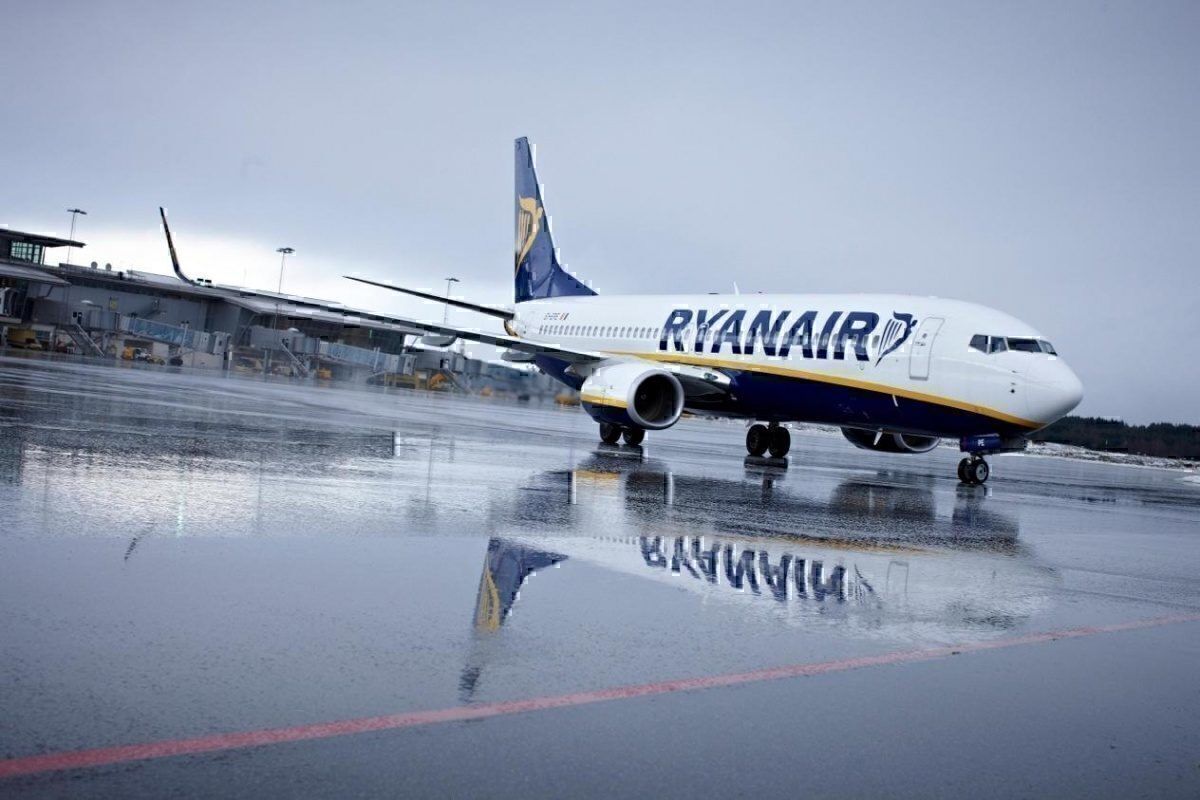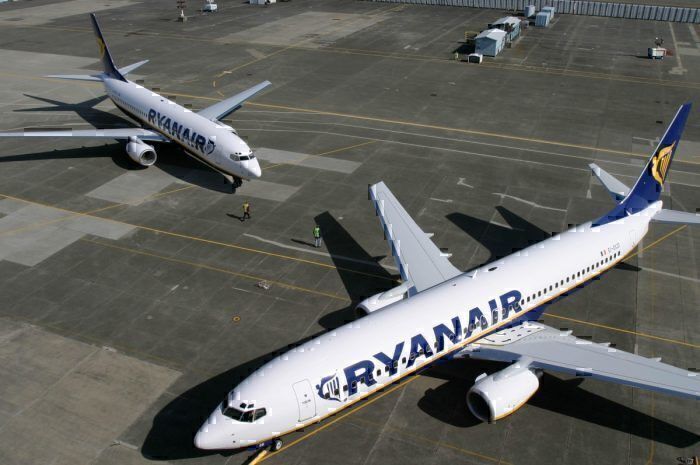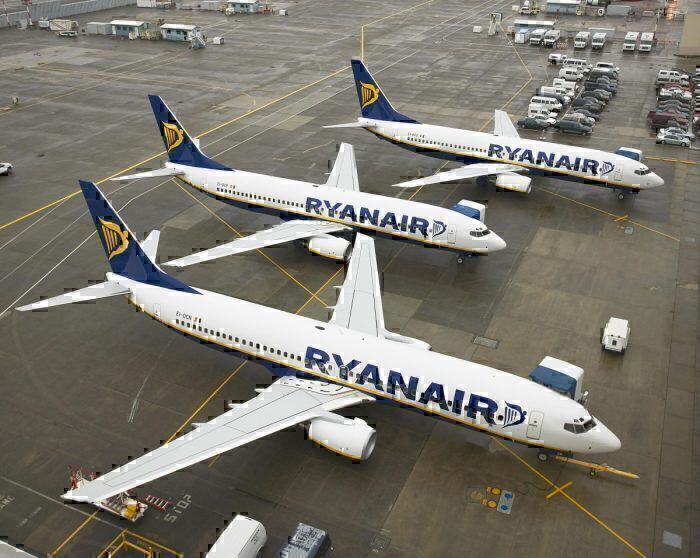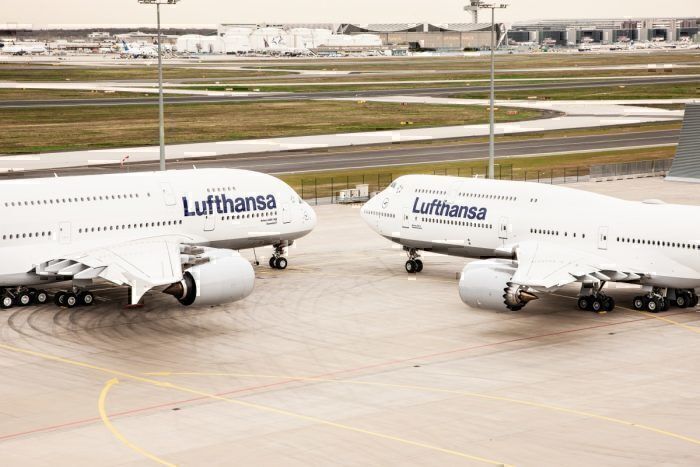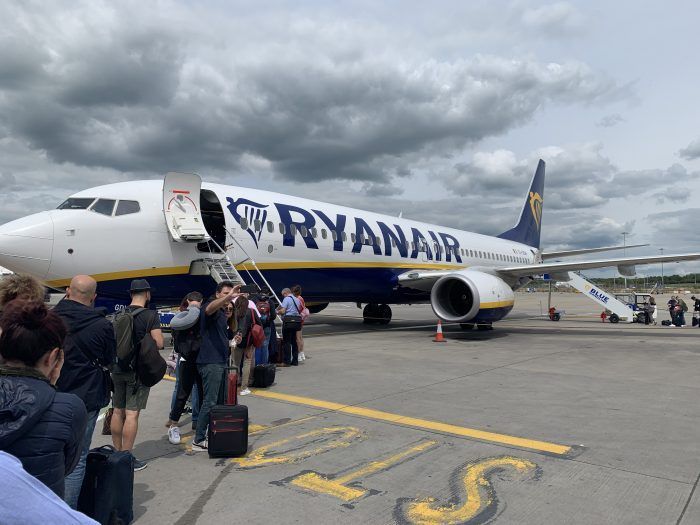Ryanair has hit back at Lufthansa’s latest assault on the carrier’s green credentials. While Lufthansa’s CEO stated Ryanair’s low fares were "economically, ecologically and politically irresponsible", Ryanair came back by thanking them for the free marketing.
Earlier this week, we reported that Lufthansa was still unhappy with cheap airline fares. Again, CEO Spohr slammed low-cost carriers such as Ryanair for offering ‘irresponsible’ fares at €10 or less. Quoted by Reuters, Spohr said,
“They [low-cost carriers] are making our industry the target of criticism and clogging up the airspace, because an artificial demand is being stimulated that wouldn’t exist if there were realistic prices. There should not be flights under 10 euros.”
However, in the same breath, Spohr defended his own airline’s subsidiary, Eurowings, for offering fares as low as €25, saying that they needed to do so to defend their home territory. As you might expect, Ryanair was not happy at having a green finger pointed at them, and were keen to have their say too.
Ryanair hits back
Ryanair has never been known for taking criticism lying down, and this was no exception. Chief Marketing Officer, Kenny Jacobs, hit back at the German carrier, drawing attention to its own poor record on CO2 emissions.
Not only that, but the CMO took it upon himself to email some 15 million customers in Germany and Central Europe (Lufthansa’s stomping ground) drawing attention to remarks made by Spohr, and how they served to highlight his own company’s’ lower fares and emissions. Bloomberg reports Jacobs as saying,
“I give our thanks to Lufthansa for making our marketing costs less … We’re very happy with the comparison.”
It’s not the first time a senior at Ryanair has been known to make wisecracks at competitor airlines, particularly on the topic of climate change. Last week, at a meeting of airline bosses to discuss the environmental impacts of aviation, CEO Michael O’Leary poked fun at the recent KLM campaign, saying,
“We applaud KLM’s #FlyResponsibly (campaign) as they also can take trains in Holland. We can’t in Ireland, we tried, but we aren’t good (at) swimming.”
In fact, it’s not even the first time they’ve run up against the Lufthansa team. Back in May, when Spohr originally branded low fares irresponsible, Ryanair’s subsidiary, Laudamotion, turned the claim on its head and used it for their own advertising.
So who’s right?
In terms of absolute emissions output, Ryanair are the bad guy hands down. In fact, in April the Guardian branded them ‘the new coal’, as they had nudged their way into the top 10 EU emitters list, behind nine power plants.
However, when you take into account the sheer size of their fleet, 420 at the last count, you can see why they would be considered a large emitter. Ryanair transported 139.2m passengers all over Europe in 2018. Although the Lufthansa Group transported more, at 142.3m, their CO2 figures are split down into each of their subsidiaries, unlike Ryanair.
To really measure the CO2 of the airlines, we’d need to know CO2 per passenger mile (or kilometer). Strangely enough, this information is pretty tough to come by. However, we can make some assumptions based on what we do know about both airlines.
Lufthansa operates a mixed fleet, which includes some younger aircraft, such as their 15 A350s and 95 A320s. However, they also have some older, less efficient planes, including 32 747s, 14 A380s and a fleet of 27 A319s with an average age of 17 years. Overall, the Lufthansa fleet is 11.9 years old. Lufthansa’s load factor for 2018 averaged 81.4%.
Ryanair operates a single fleet type and is the world’s largest operator of the 737-800. Its average fleet age is 8.1 years and their published load factor for 2018 was 97%.
Even without having the numbers to hand, it’s pretty obvious who would have the lowest CO2 per passenger mile. Lufthansa, with 18.6% of their seats empty and a number of highly inefficient planes in their fleet can’t possibly cast aspersions on Ryanair, who rarely have a seat free and exclusively operate an efficient small plane on all their routes.
While Spohr always harks back to ‘green’ credentials when he makes these claims, in reality, it’s just a lot of bellyaching about low fares that he just can’t compete against.
What does Ryanair think about the environment?
Ryanair does just as much greenwashing as the next airline, and have recently been applauded for being the first European airline to publish monthly CO2 figures. However, if being greener means paying more, they’re not so happy. At the recent meeting of airline heads, O’Leary is reported by Airline Geeks as saying,
“Globally, European airlines are the only airlines paying environmental taxes. More aviation taxes are a knee-jerk reaction that will undermine European competitiveness and particularly hurt the integration and free movement of EU citizens, especially for peripheral and island Member States such as Ireland, Spain, Portugal and the Baltic States, for example.”
Currently, airlines are the only sector of transportation who contribute to the EU Emissions Trading Scheme (ETS). They’ve been paying in since 2013, and in that time the costs per ton of CO2 have risen from €5 to €25.
For low-cost carriers, being environmentally friendly comes as a win-win situation. More efficient planes, flying fuller, leads to lower CO2 emissions. However, the same situation also leads to lower costs and higher profits. While it’s nice that Ryanair wants to paint its brand green, there’s also keen economic reasoning behind their lower carbon footprint.

